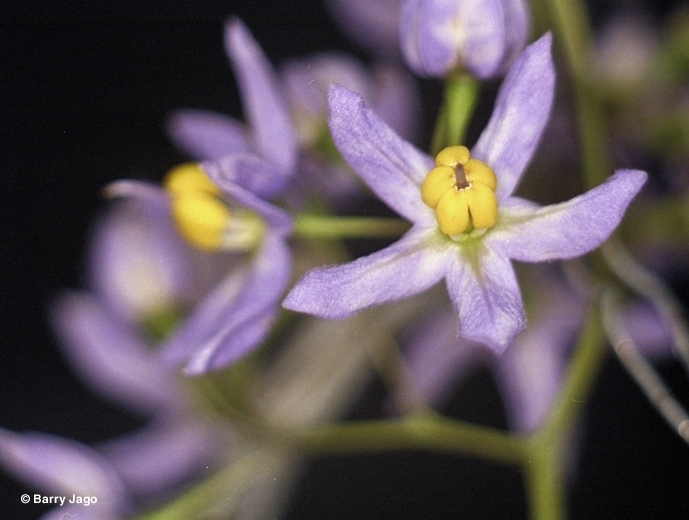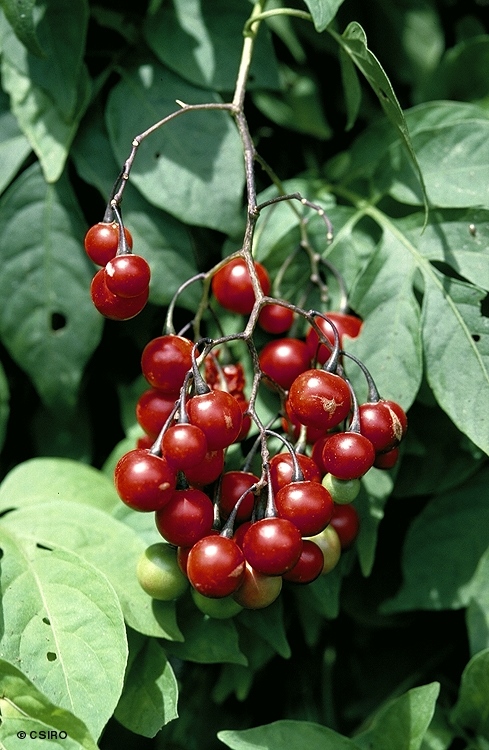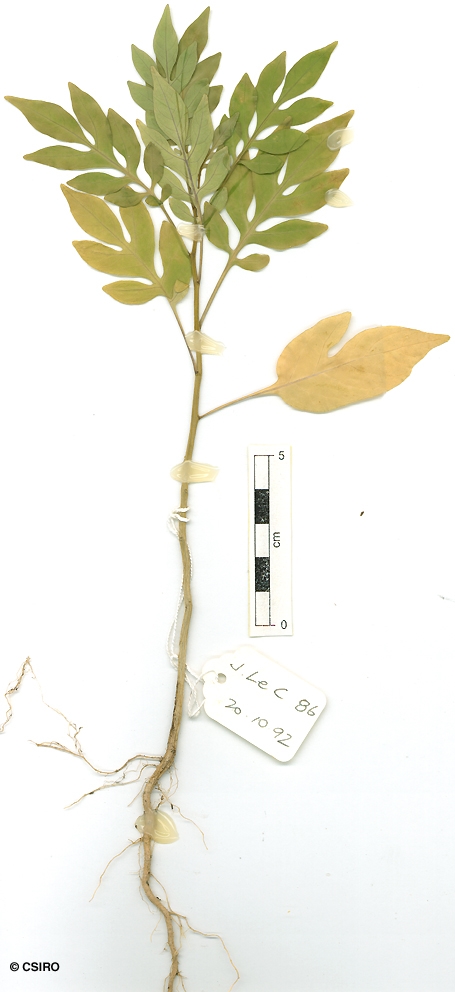Australian Tropical Rainforest Plants - Online edition
Solanum seaforthianum Andrews








Andrews, H.C. (1808) The Botanists Repository 8: t.504. Type: Cultivated in Britain, collected in West Indies, Seaforth; holo: H. Andrews, Bot. Repos., t. 504. Fide D. E. Symon (1981).
Nightshade, Deadly; Black Nightshade; Brazilian Nightshade; St. Vincent Lilac; Climbing Nightshade; Deadly Nightshade; Bean, Velvet; Nightshade, Climbing; Nightshade, Brazilian; Nightshade, Black; Nightshade; Tomatillo; Bean, Burny
Usually a slender vine, flowering and fruiting when quite small, however, it can grow to form a tree-top vine. Vine stem diameters to 3 cm recorded.
Crushed leaves emit an unpleasant odour. Leaf or leaflet blades clothed in short pale-coloured hairs which are just visible with a lens. Lateral leaflet blades about 1.5-3 x 1-1.5 cm, stalks absent or up to 2 mm long. Terminal leaflets +/- 3-lobed.
Fruits globose, about 7-13 mm diam. Seeds patelliform, about 3-4 mm diam., testa +/- clothed in hairs. Embryo about 5-6 mm long, coiled in a flat spiral with the tips of the cotyledons in the centre. Cotyledons about 4 mm long, about as long and wide as the radicle.
Cotyledons elliptic to oblong, about 10-19 x 2.5-4.5 mm, venation more obvious on the underside. Both the upper and lower surfaces clothed in short hairs, margins ciliate. First leaves ovate, base rounded, both the upper and lower surfaces hairy, margins ciliate. Midrib raised on the upper surface. At the tenth leaf stage: leaf blade variable, margins entire to deeply lobed or the leaf could be interpreted as being pinnately compound with 7-9 leaflets. Midrib raised on the upper surface of the leaf blade. Underside of the leaf blade clothed in very small prostrate hairs. Crushed leaves emit an unpleasant odour. Seed germination time 7 to 14 days.
An introduced species originally from the West Indies, now naturalised in WA, NT, CYP, NEQ, CEQ and southwards as far as south eastern New South Wales. Altitudinal range in CYP and NEQ from near sea level to 900 m. Grows around settlements and in disturbed areas in wet sclerophyll forest, lowland and upland rain forest, and in monsoon forest and vine thicket. Also naturalised in South and Central America and in many other tropical countries.
Field evidence strongly suggests that this species maybe toxic if eaten. Children and poultry have been adversely affected after eating fruit. Cattle, pigs and sheep have also been affected by this species. Everist (1974).
This species produces large crops of red berries which are eaten by birds. It is now a widespread weed.





